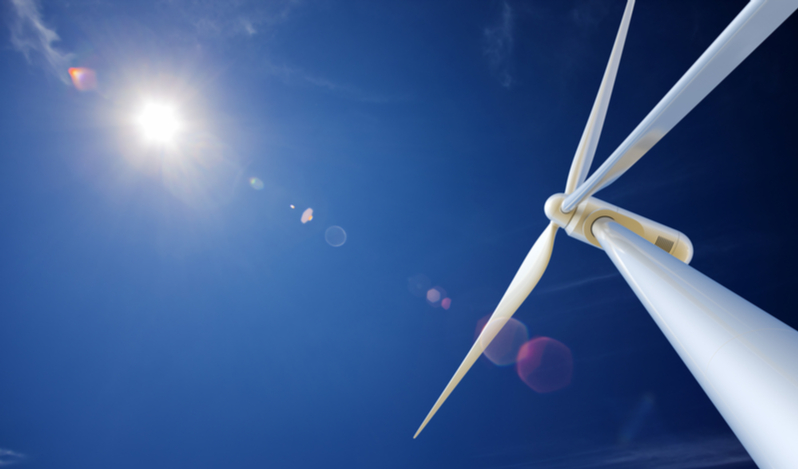What role did frozen wind turbines play in the Texas power crisis?

The Electric Reliability Council of Texas’ (ERCOT) decision to impose rolling blackouts on millions of customers led to crisis conditions for many residents amid one of the worst winter storms in recent memory. It has also triggered a debate over who or what was to blame for the power outages in Texas. While several power sources failed during the storms, many have said the frozen wind turbines are to blame.
U.S. Rep. Dan Crenshaw pointed the finger at wind power for causing the blackouts. He tweeted, “This is what happens when you force the grid to rely in part on the wind as a power source. When weather conditions get worse as they did this week, intermittent renewable energy like the wind isn’t there when you need it.”
Texas Gov. Greg Abbott agreed, telling Fox News that frozen wind turbines were the main problem for the grid. “This shows how the Green New Deal would be a deadly deal for the United States of America,” he said. “Texas is blessed with multiple sources of energy, such as natural gas and oil and nuclear, as well as solar and wind. But … our wind and our solar that got shut down … thrust Texas into a situation where it was lacking power [on] a statewide basis.”
But energy experts say wind power is not to blame, stressing instead that the power system as a whole failed. While frozen wind turbines impacted output, the drop in output from natural gas and coal power plants was even greater during the storm.
ERCOT loses over 40 gigawatts of capacity
ERCOT announced during the power outages that 16 gigawatts of generation capacity from renewable sources were offline, the majority of which was the wind. That equates to about half of the state’s available wind capacity at the time.
However, 30 gigawatts of capacity from gas, coal, and nuclear sources were also unavailable. These sources made up a much larger portion of the lost capacity. “Texas is a gas state,” argued Michael Webber, a professor of energy resources at the University of Texas at Austin. “Gas is failing in the most spectacular fashion right now.”
The sharp decline in generation capacity was compounded by the fact that ERCOT was dealing with a record peak for winter demand. On Sunday, February 14, it rose above 691 gigawatts. This is much higher than ERCOT’s estimated winter peak of 57 gigawatts and well above the previous winter record of 65 gigawatts from January 2018.
A failure of infrastructure
On top of the lack of energy supply and record electricity demand, a failed infrastructure worsened the power crisis. Gas pipelines, wells in the Permian basin, and processing plants froze in the bitter cold. This phenomenon is known as “freeze-offs” in the energy sector. Natural gas production in the Permian plunged to about half of its usual level.
Freeze-offs have been rare in Texas, above all due to the state’s normally mild winter climate. But critics point out that there were warnings about the impact of severe winter weather years before last week’s storm. Further, preventive measures could have been taken to reduce the risk of freeze-offs.
Many gas power plants in Texas are built without walls to guard against the threat posed by overheating in the summer. But in 2011 and 2013, reports prepared by industry groups pointed out that the lack of weatherization measures to protect the state’s infrastructure from the cold was a concern. “With gas prices being low – and storage being full – the risk of 2-3 days of possible freeze-off every several years is a risk that Gulf Coast producers have been willing to take,” a report prepared for ERCOT in 2013 noted.
These risks have become problematic as the number of extreme weather events goes up due to climate change. Projections for winter or summer peak demand by grid managers have been increasingly inaccurate. This is because the historical data they are based on doesn’t take into account the changing weather patterns.
California experienced similar challenges at the other end of the weather spectrum last summer when an unprecedented heatwave triggered a spike in demand that the state’s power grid couldn’t meet. The result was rolling blackouts.
“If you’re planning for historic events … that is not going to be good enough,” explains Michael Craig, an assistant professor of energy systems at the University of Michigan. “And we thought [planning for historic events) would not be good enough, five, or 10, or 15 years down the line. But we are quickly realizing … with California this summer and other events, that it’s not really good enough right now.”
Even Gov. Abbot, who sharply criticized renewable energy over the power outages, appears to acknowledge that the problems go much deeper. He remarked that reforming ERCOT is an “emergency item” for the 2021 legislative session, and criticized the grid manager for its lack of preparedness for the storm. “This was a total failure by ERCOT,” comments Abbott. “ERCOT stands for Electric Reliability Council of Texas, and they showed that they were not reliable.”
This article was originally published on Chooseenergy.com
About the Author:
Jordan Smith is a freelance journalist and translator covering issues related to energy, the environment, and politics. His work has appeared on the independent news site Opposing Views and at the Canadian Labour Institute.




